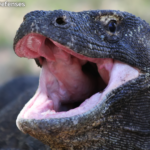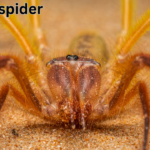Introduction
Camel Spider are the stuff of nightmares and internet myths. Known for their terrifying appearance and lightning-fast speed, they’ve sparked fear and fascination alike. But how much of what you’ve heard is true? Despite their reputation, these desert-dwelling creatures aren’t venomous monsters. They belong to the Solifugae order, related to scorpions and spiders. Found in arid regions across the Middle East, North Africa, and the Americas, they are expert hunters with powerful jaws. Are camel spiders dangerous to humans? Do they really chase people? Let’s uncover the truth about these misunderstood arachnids and bust some popular myths!
What is a Camel Spider?

Camel spiders are not spiders at all. They belong to the order Solifugae, a group of arachnids closely related to scorpions. Known by various names like wind scorpions and sun spiders, they are unique desert predators. Despite their spider-like appearance, they have significant differences from true spiders.
These creatures thrive in hot, arid environments. You’ll find them in regions like the Middle East, North Africa, and parts of the Americas. Their name comes from the mistaken belief that they feed on camels, which is untrue.
Camel spiders are known for their large, powerful chelicerae (jaws). These jaws help them crush and tear apart prey. Unlike venomous spiders, they rely on brute strength rather than poison.
They are also incredibly fast, capable of running up to 10 miles per hour. This agility makes them efficient hunters in sandy terrains.
While they may look terrifying, camel spiders are fascinating survivors perfectly adapted to harsh desert life.
Taxonomy and Classification
Camel spiders belong to the order Solifugae, a classification within the class Arachnida. Although often mistaken for spiders, they are a distinct group of arachnids. This order includes over 1,000 species, each adapted to arid environments.
The scientific classification of camel spiders starts with the kingdom Animalia and phylum Arthropoda. Their class, Arachnida, also includes spiders, scorpions, and ticks. However, camel spiders are not spiders or scorpions; they form their unique order.
Solifugae are divided into several families, with Galeodidae and Eremobatidae being among the most well-known. Each family has distinct traits that suit their specific habitats.
Camel spiders are identified by their large chelicerae and segmented bodies. Unlike true spiders, they lack silk glands and venom. This difference sets them apart within arachnid taxonomy.
Understanding their classification helps debunk myths. Camel spiders are remarkable creatures with a fascinating evolutionary history, not dangerous predators as many believe.
Common Names and Origins
Camel spiders are known by many names. Common names include sun spiders, wind scorpions, and solifuges. These names reflect their appearance and behavior rather than scientific accuracy.
The name “camel spider” comes from myths suggesting they attack camels. However, this is false. They do not feed on camels or drink their blood.
“Sun spider” refers to their preference for warm, sunlit environments. They are active hunters that thrive in deserts and dry regions.
“Wind scorpion” describes their speed and agility, although they are not true scorpions. They move quickly to chase prey or seek shelter.
Their origins trace back to desert regions in the Middle East, North Africa, and the Americas. These areas provide the arid conditions they need. Understanding their true nature helps debunk the fear-inducing myths surrounding these fascinating creatures.
Physical Characteristics
Camel spiders have unique physical characteristics that set them apart from other arachnids. They typically grow between 3 to 6 inches in length, including their legs.
Their most distinctive feature is their large, powerful chelicerae. These jaws are used for cutting and crushing prey. They are strong enough to tear through small animals.
Camel spiders have a segmented body with two main parts: the cephalothorax and the abdomen. Their body is covered in fine hairs to sense vibrations.
They possess five pairs of legs, but only four are used for walking. The fifth pair acts as sensory appendages.
Their light brown or tan color provides camouflage in sandy environments. These features help them survive and hunt in harsh desert conditions.
Size and Appearance
Camel spiders have a distinctive size and appearance. Their body length ranges from 2 to 6 inches, depending on the species. Including their legs, some can appear much larger.
They have a robust, segmented body divided into a cephalothorax and abdomen. Their flattened shape allows them to move easily under rocks and through tight spaces.
One of their most striking features is their large chelicerae. These powerful jaws are nearly one-third of their body size and are used to capture and crush prey.
Camel spiders have eight legs, but they also possess two long pedipalps. These appendages help them feel their surroundings and grasp food.
Their sandy or tan coloration blends perfectly with desert landscapes, providing effective camouflage. This helps them stay hidden from predators and prey.
Speed and Agility
Camel spiders are known for their incredible speed and agility. They can run at speeds of up to 10 miles per hour. This quick movement helps them chase prey and escape predators.
Their long, powerful legs are designed for swift, efficient movement across sandy terrain. The legs are covered with sensory hairs that detect vibrations.
Camel spiders are also excellent climbers. They can scale rocks and other surfaces with ease. Their agility makes them highly effective hunters in desert environments.
Unlike many arachnids, camel spiders are active during the night and the day. This behavior is part of their adaptive strategy.
Their speed and agility are often mistaken for aggression. However, they typically run to find shade or shelter rather than to attack humans.
Habitat and Distribution
Camel spiders thrive in hot, dry environments. They are primarily found in deserts and arid regions. These habitats provide the warm temperatures they need to survive.
Their range includes the Middle East, North Africa, and Southwest United States. Some species also live in Central and South America. They adapt well to sandy and rocky landscapes.
Camel spiders hide in burrows, crevices, and under rocks to escape the heat. These shelters protect them from predators and extreme temperatures.
They are most active during the night and early morning, avoiding the hottest parts of the day. Their behavior helps them conserve energy.
By understanding their habitat and distribution, we can better appreciate how camel spiders are adapted to their harsh environments. Their ability to survive in extreme conditions is truly remarkable.
Preferred Climate
Camel spiders prefer hot, dry climates. They thrive in regions with extreme temperatures, typical of deserts and arid environments. These conditions suit their need for warmth.
They are adapted to tolerate scorching heat and low humidity. Camel spiders can endure long periods without water, relying on moisture from their prey.
Desert habitats, like those in the Middle East and North Africa, provide the ideal climate. The constant sun and sparse vegetation make these areas perfect for camel spiders to hide and hunt.
They avoid cooler environments, as their survival depends on warmth for their metabolic functions. Their behavior is tailored to these extreme conditions.
In summary, camel spiders thrive in hot, arid climates, making them well-suited for desert life. Their climate preferences define their survival and hunting habits.
Geographic Range
Camel spiders have a wide geographic range. They are primarily found in desert regions across the globe. Their habitats span from the Middle East to North Africa and parts of Southwest United States.
They also inhabit areas in Central and South America, including the deserts of Chile and Argentina. These locations offer the dry, warm climates camel spiders prefer.
In each of these regions, camel spiders are well adapted to their local environments. They are often found under rocks or in burrows to escape extreme temperatures.
The geographic distribution of camel spiders is tied to areas with limited rainfall. Their ability to survive with minimal water allows them to thrive in these dry landscapes.
Understanding the geographic range of camel spiders highlights their remarkable adaptability. These creatures can live in some of the harshest climates on Earth.
Diet and Hunting Behavior
Camel spiders are carnivorous creatures that primarily hunt small animals. Their diet consists of insects, scorpions, and even small rodents. They use their strong chelicerae to capture and crush prey.
Their hunting behavior is aggressive and efficient. Camel spiders rely on their speed to ambush or chase down victims. Their quick movements make them effective predators in desert environments.
Unlike true spiders, camel spiders do not use webs to trap prey. Instead, they actively hunt and stalk their food. They are solitary hunters, preferring to catch prey on their own.
Their sharp jaws allow them to feed on larger creatures, such as lizards or small birds. They often tear apart their catch before eating it.
Camel spiders are opportunistic hunters. Their ability to adapt their diet to available prey ensures their survival in harsh conditions.
Carnivorous Nature
Camel spiders are carnivorous predators. They primarily hunt small invertebrates, including insects and scorpions. Their powerful jaws allow them to catch and subdue prey with ease.
Their diet also includes larger animals, such as lizards and rodents. Camel spiders have been known to consume small birds in some cases. This makes them opportunistic hunters, willing to tackle any prey they can overpower.
Camel spiders use their speed to chase down or ambush victims. Their agility helps them catch prey that may be faster or more evasive.
They do not rely on venom. Instead, they use their strong chelicerae to crush and tear apart their meals. This feature is vital to their feeding strategy.
Their carnivorous nature ensures they thrive in arid environments. By hunting a variety of prey, camel spiders maintain a steady food source.
Hunting Techniques
Camel spiders use several hunting techniques to capture prey. Their speed is their greatest asset, allowing them to chase down and overpower small animals.
They often rely on ambush tactics. Camel spiders hide under rocks or burrow into the sand, waiting for prey to approach. When the moment is right, they pounce quickly.
Their long, powerful legs give them excellent maneuverability in sand and rocky areas. This agility helps them chase prey across difficult terrain.
Once they catch their prey, camel spiders use their strong chelicerae to grasp and crush it. Their jaws are capable of breaking through tough exoskeletons.
These techniques are highly effective in desert environments. Camel spiders are skilled hunters, perfectly adapted to capture and feed on a wide range of creatures.
Camel Spider Myths and Misconceptions
There are many myths surrounding camel spiders. One of the most common misconceptions is that they are deadly to humans. In reality, camel spiders are not venomous and pose no serious threat to people.
Another myth suggests that camel spiders chase humans. While they may run towards moving objects, camel spiders are more likely to be seeking shelter or hunting prey, not attacking humans.
Some believe that camel spiders eat camels. However, this is completely false. Camel spiders do not feed on large animals like camels; their diet consists mainly of smaller creatures.
Another misconception is that camel spiders are aggressive predators. They are not inherently aggressive but instead act out of self-defense when threatened.
Understanding the truth behind these misconceptions helps people appreciate the true nature of camel spiders. They are fascinating creatures, not the dangerous monsters many believe them to be.
Myth 1: They Are Deadly to Humans
One of the most common myths about camel spiders is that they are deadly to humans. This idea has been fueled by exaggerated stories and internet rumors. In reality, camel spiders are not venomous and do not pose a significant danger to humans.
Their large jaws may look frightening, but they are not capable of causing serious harm to people. Camel spiders use their chelicerae to capture and crush smaller prey, not to defend against humans.
Bites from camel spiders are rare. While their jaws are sharp, their bites usually cause only mild irritation. Some may experience redness or swelling, but this is temporary.
Unlike some arachnids, camel spiders do not inject venom. This is why they are not dangerous in the way that scorpions or certain spiders are.
It’s important to dispel this myth. Camel spiders are more interested in avoiding humans than attacking them, making them harmless to people.
Myth 2: They Chase Humans
Another common myth about camel spiders is that they chase humans. This idea has been spread widely, often in exaggerated stories. However, camel spiders do not actively pursue humans.
Instead, camel spiders are territorial creatures. They may run toward a person simply because they perceive movement. But this behavior is more about exploring or seeking shelter, not attacking.
Camel spiders are also predatory hunters, primarily focused on capturing smaller animals like insects and scorpions. Humans are not part of their natural prey.
Their speed is impressive, but they use it to escape danger or chase prey, not to chase people. They are far more likely to avoid humans than to actively engage with them.
Understanding the truth behind this myth can help people appreciate camel spiders for what they are: solitary hunters that tend to avoid conflict with humans.
Are Camel Spiders Harmful?
Camel spiders are generally not harmful to humans. They are not venomous and do not pose a serious health risk. Despite their intimidating appearance, they are not aggressive towards people.
Their bites are rare, and when they do occur, they are usually harmless. The bite may cause mild pain, redness, or swelling, but these symptoms fade quickly.
Camel spiders use their powerful jaws for hunting small prey, not for defending against humans. Their jaws are designed for crushing insects and scorpions, not for inflicting harm on larger creatures.
While camel spiders are not dangerous, it is important to avoid handling them. They may bite in self-defense if they feel threatened.
In summary, camel spiders are harmless creatures that play an important role in their ecosystems. They are not a threat to humans, and understanding their behavior can help reduce unnecessary fear.
Fascinating Facts About Camel Spiders
Camel spiders, also known as solifuges, are fascinating creatures. Despite their name, they are not true spiders. Camel spiders are part of the order Solifugae. They are found in deserts, thriving in extreme environments. Their speed and size make them stand out among desert inhabitants.
Camel spiders are known for their powerful jaws. These jaws help them catch prey like insects, small animals, and even scorpions. They are fast and agile, often sprinting up to 10 miles per hour. Their hunting style is very effective, as they can capture prey in seconds.
Interestingly, camel spiders are not venomous. While they have large fangs, they use them to crush and tear apart prey rather than inject venom. This makes their hunting technique unique and efficient. Many people believe camel spiders are dangerous, but they are not a threat to humans.
Conclusion
The camel spider, also known as a wind scorpion, is often the subject of exaggerated tales due to its fearsome appearance and swift movements. However, it is important to note that camel spiders are not dangerous to humans. They do not possess venom that is harmful to people, although their bite can be quite painful. These arachnids are primarily nocturnal hunters, preying on insects, small rodents, and lizards.
Despite their intimidating look, camel spiders play a crucial role in the ecosystem by controlling the population of other small pests. So, while their appearance might send chills down your spine, they are fascinating and beneficial creatures.










